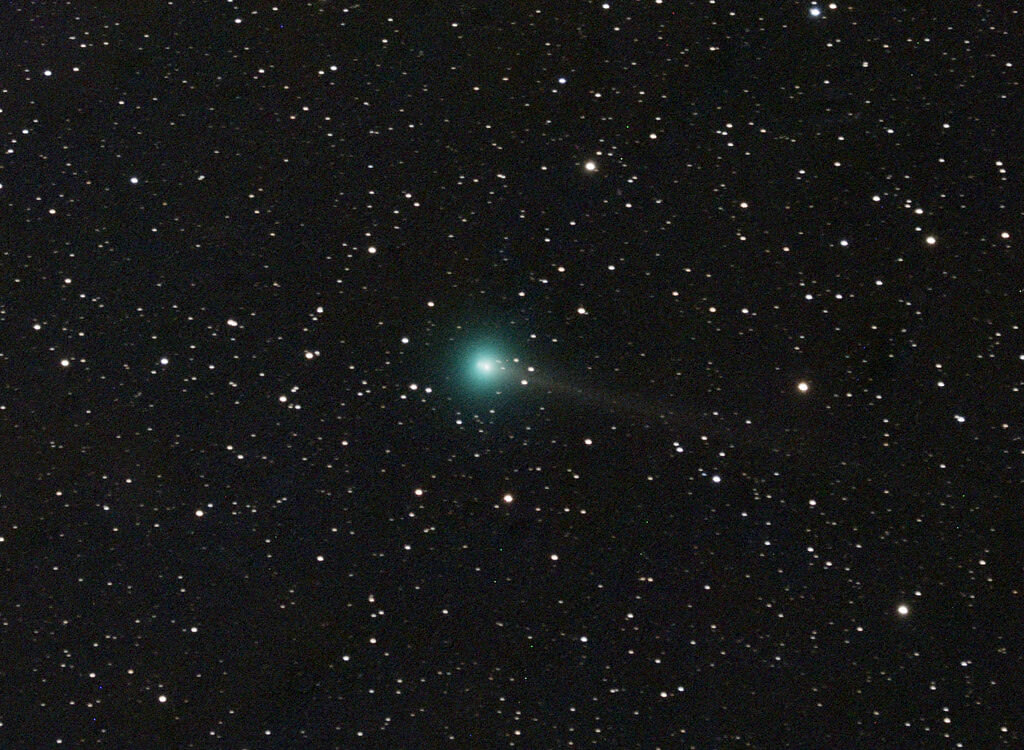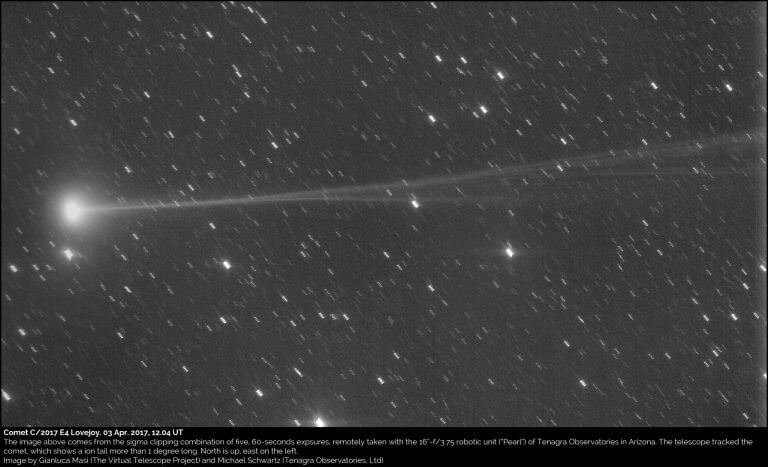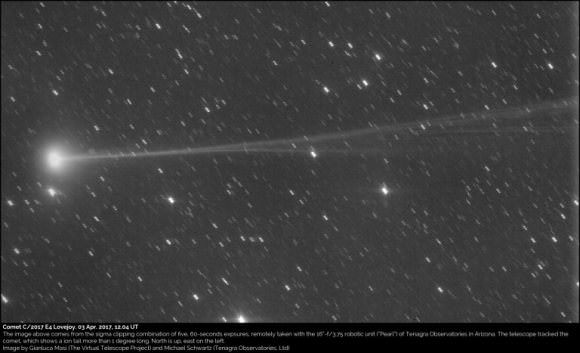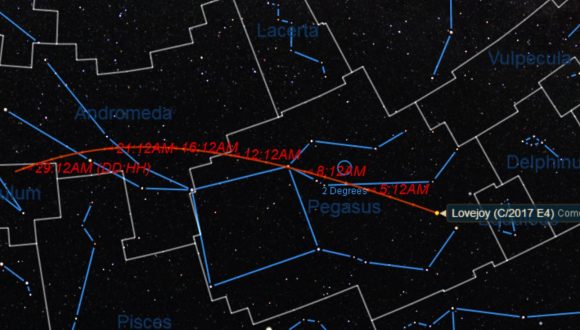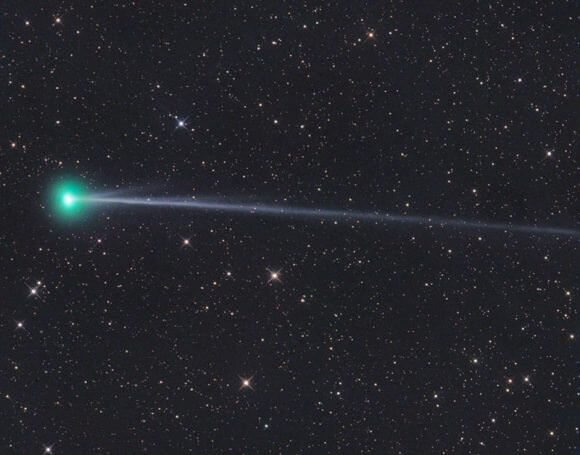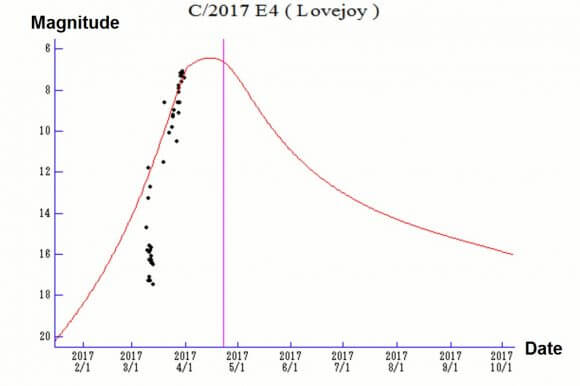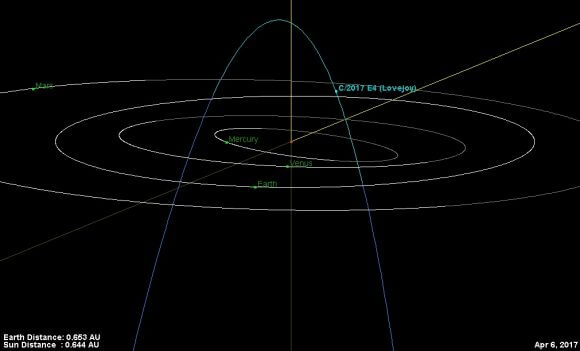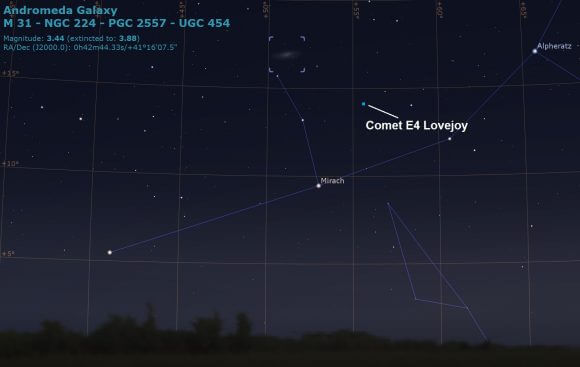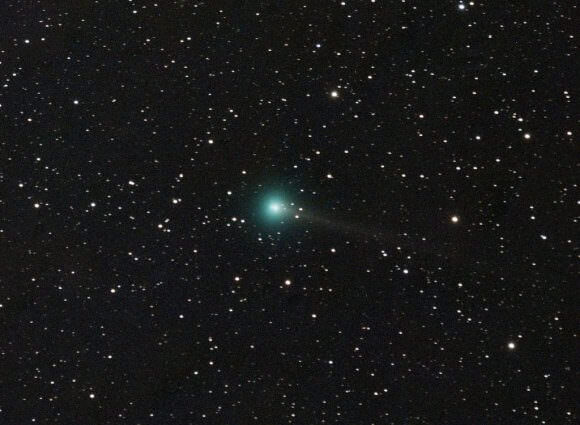
Have you been following the springtime parade of bright comets? Thus far, the Oort cloud has offered up several fine binocular comets, including Comet 2/P Encke, 41/P Tuttle-Giacobini-Kresak, 45/P Honda-Mrkos-Pajdusakova, C/2016 U1 NEOWISE and C/2017 E4 Lovejoy. Now, another comet joins the dawn ranks, as it brightens up ahead of expectations: 2015 ER61 PanSTARRS.
Discovered on March 15th, 2015 by the prolific PanSTARRS-1 NEO survey atop Haleakala in Maui, Hawaii, Comet ER61 PanSTARRS made our who’s-who list of bright comets to watch for in 2017. The odd “ER61” designation stems from the early identification of the object as an asteroid, before it presented observers with a cometary appearance.
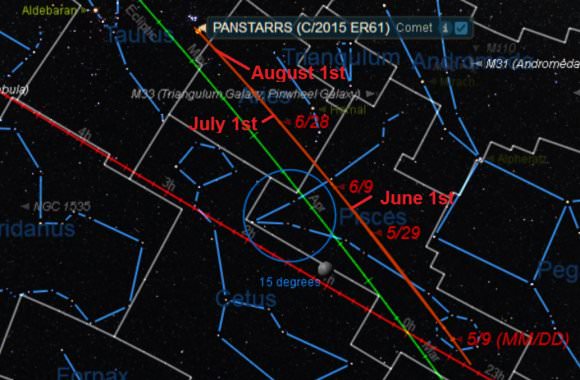
Late northern hemisphere Spring through Summer sees the comet maintaining a decent elevation above the eastern horizon at dawn, gliding north and parallel to the ecliptic plane through the constellations Pisces, Aries and Taurus from May through mid-August. The comet passed 1.08 AU from the Earth last month on April 4th, and is now racing away from us. The comet’s location near the March equinoctial point on the celestial hemisphere assures an equally good apparition for both the northern and southern hemisphere. As seen from latitude 30 degrees north, the comet sits 30 degrees above the eastern horizon, through the remainder of May. Venus also makes a brilliant beacon to track down Comet ER61 PanSTARRS, as the planet heads towards greatest elongation 46 degrees west of the Sun on June 3rd.
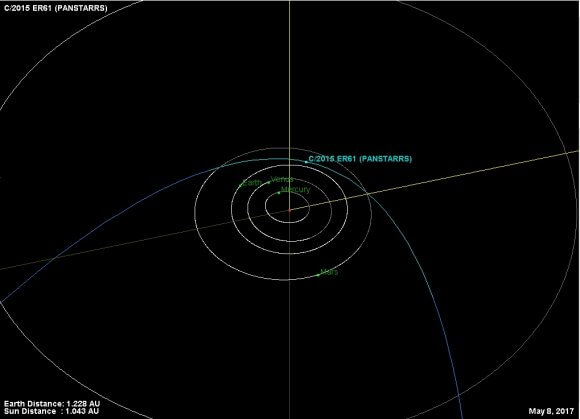
The comet is also on a 7,591 year long orbit inbound, which takes it out nearly 2,500 AU from the Sun. That’s 190 times the Pluto-Sun distance, and the fourth most distant aphelion of any solar system object known. The 2015-2017 passage of the comet through the inner solar system actually shortened the orbit of Comet ER61 PanSTARRS down to an aphelion of ‘only’ 854 AU due to a 0.9 AU pass near Jupiter last year on March 28th, 2016. A similar orbital shortening by Jove occurred for Comet Hale-Bopp in 1996, which came in on an 4,200 year orbit and departed the inner solar system on a shorter 2,500 year path around the Sun.
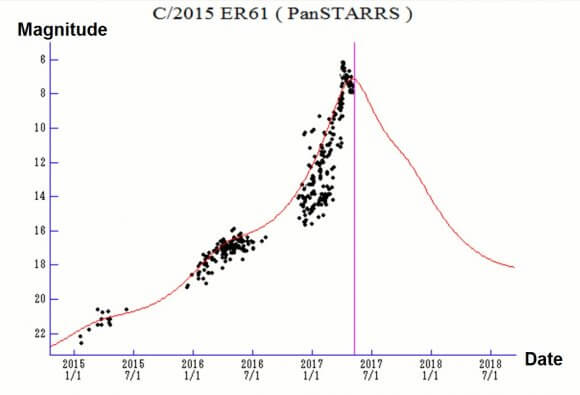
Prospects and Prognostications
Observers reported an outburst from the comet last month in the first week of April, causing it to jump about 2 magnitudes in brightness. Right now, it’s holding steady at +7th magnitude. Unfortunately, the Moon reaches Full phase this week on May 10th, though you’ve still got a slim window to hunt for the comet after Moonset and before sunrise. Once the Moon moves towards a slender crescent phase next late week, we’ll once again have dark predawn skies ideal for comet hunting.
Here are some key dates for Comet C/2015 ER61 PanSTARRS as it glides through the dawn sky:
(Stars highlighted are brighter than +5th magnitude, and passes are less than a degree unless otherwise noted.)
May 10th: Reaches perihelion at 1.04 astronomical units (AU) from the Sun.
May 12th: Passes near the +4.9 magnitude star 19X Piscium.
May 20-23rd: Passes less than 10 degrees from Venus.
May 21st: The waning crescent Moon passes less than 10 degrees to the south.
June 10th: Passes near the +3.6 magnitude star Eta Piscium.
June 11th: Passes near the galaxy M74.
June 16th: Passes into the constellation Aries.
June 19th: The waning crescent Moon passes 9 degrees to the south.
July 13th: Passes near (less than 5′) the +4.6 magnitude star Epsilon Arietis.
July 18th: The waning crescent Moon passes 9 degrees to the south.
July 23rd: Passes near the +4.8 star Zeta Arietis.
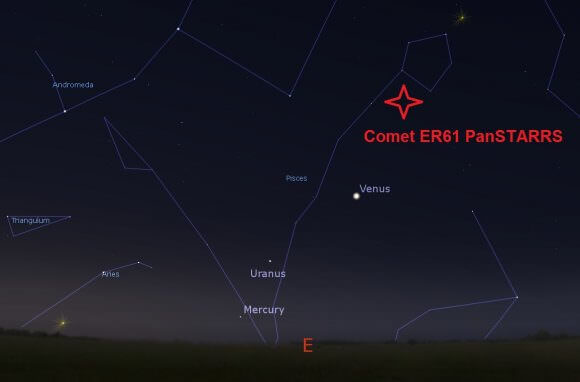
August 2nd: Crosses into the constellation Taurus.
August 15th: The waning crescent Moon passes 8 degrees to the south.
August 16th: Passes near M45 (The Pleiades)
After mid-August, Comet 2015 ER61 PanSTARRS will drop back down below +10th magnitude, not to return for several millennia to come.
Observing a comet like ER61 PanSTARRS is as simple as knowing where and when to look, then starting to slowly sweep the suspect area with binoculars for a little fuzzball looking like a globular cluster stubbornly refusing to snap into focus. In pre-telescopic times, ER61 PanSTARRS would’ve entered and exited the inner solar system unrecorded.
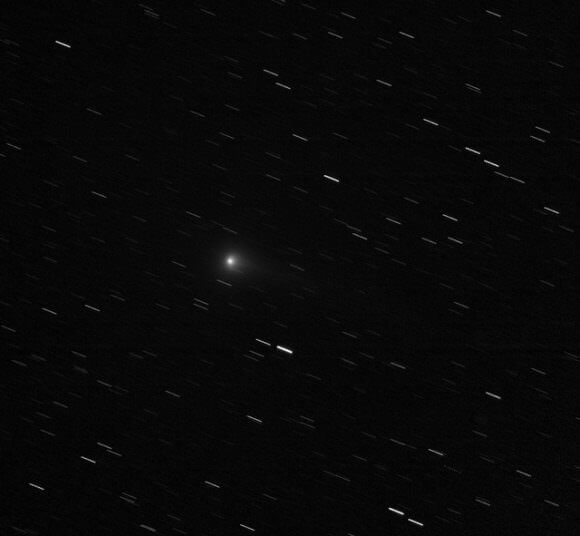
Next up: We’ve got one more predicted comet on tap for 2017, as C/2015 V2 Johnson brightens up to +7th magnitude in mid-June. Keep watching the skies, as the next great comet of the century could always appear unannounced at any time.

